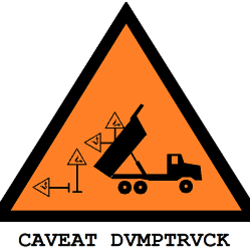Apparently the word “the” has been declining in use-frequency over the last 100 years or so – though it remains the single most common word in the English language.
There is a recent article on the Language Log Blog about it: here.
There is a more in-depth (more definite?) article from the same source, from some years ago: here.
I have always really liked the word “the” – it’s one of my favorites. Perhaps it became a favorite about the time I realized there are languages that don’t have a word that means “the”. Russian, for example, has no definite article. And they do fine. Korean, too, utterly lacks a word for “the” (Korean, on the other hand, deploys a “topic clitic” (-는) that is quite weird and impossible to translate to English reliably, but that overlaps semantically in some respects with “the” – but not enough to be considered in any way the “same” word).
“The” is a very strange word, actually, if you start to think about it. If languages can do fine without a word that means “the”, what, exactly, is the word “the” doing?
If things go on with the same trend, perhaps English will evolve in the direction of eliminating definite articles. I did some googling and found the example of Aramaic (specifically its Eastern dialects) as being a language that once had but has now lost the definite article. The opposite change is much more familiar to me: though Latin lacked definite articles, all of its modern descendants (Italian, Spanish, Romanian, etc.) have them. Historical linguists blame the Greeks for the spread of the definite article – the Greeks’ enthusiastic deployment of definite articles is well known.
That said, most evidence suggests Greek-speakers acquired their definite article mania from those Phoenicians. Early Semitic languages appear to have been original innovators of old-world definite-articlism, and modern Arabic is well known for its ubiquitous definite article, “al- “, such that that prefix is a marker for “Arabic” in stereotypical representations. Aramaic is interesting because, with such a long, long documented history (3000 years!) it has in fact passed through both processes: it at one point acquired a (the?) definite article (under influence from Hebrew and Arabic, perhaps) and then later lost it again (in many dialects).
In a slight digression, there is a nice word worth knowing: arthrous. This is a term in formal linguistics and philology, an adjective meaning that a particular language uses articles (both definite and indefinite, or of other weird flavors of article e.g. Swahili, I think). Thus English or French or Greek or Arabic are “arthrous” languages, because they have articles (definite, indefinite, or both); meanwhile, Russian, Korean, or modern Eastern Aramaic are “anarthrous” languages, because they do not have grammatical articles.
Perhaps in future English will make do without definite article.
(The.) End.









